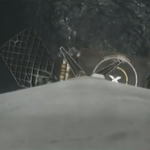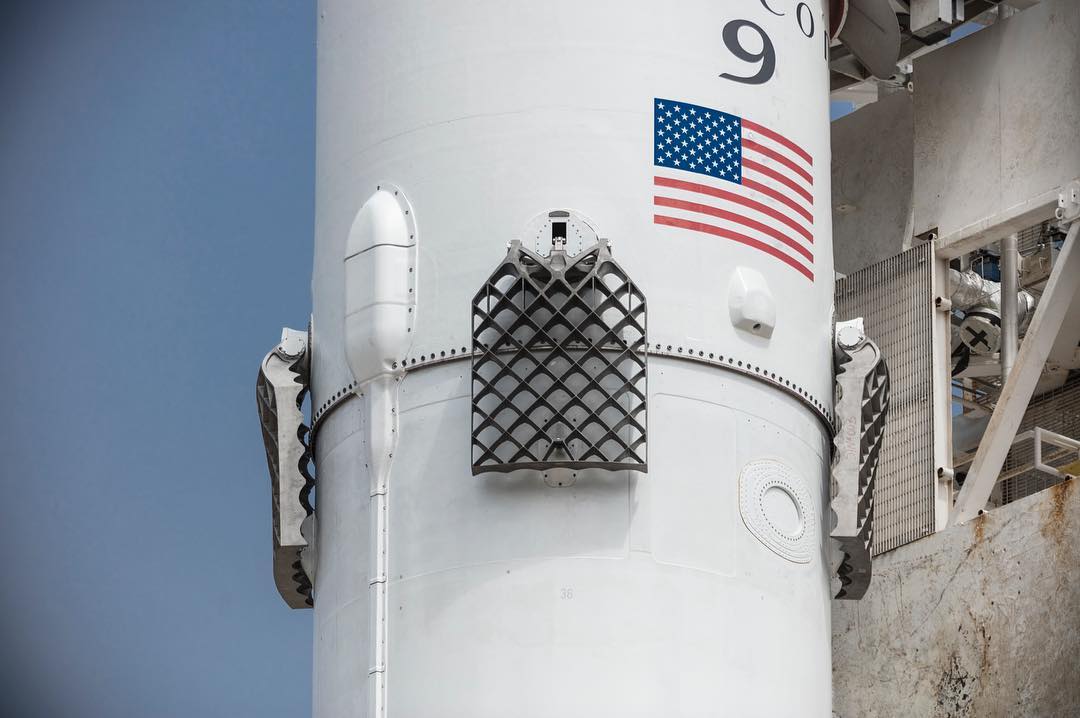

News
SpaceX completes two Falcon 9 launch-and-recovers in less than 48 hours
SpaceX has successfully launched its second Falcon 9 mission in less than 48 hours, lifting 10 Iridium NEXT satellites into Low Earth Orbit and recovering the first stage in the Pacific Ocean in spite of sub-optimal weather conditions.
This launch saw the debut of improved titanium grid fins on the first stage of Falcon 9, providing the vehicle with better control authority and greater ease of reuse. One distinct benefit of these new grid fins is that they no longer require an ablative coating of heat-resistant paint like their aluminum predecessors. In the past, this paint would vaporize in the heat of reentry and cover the camera housing on the first stage, interrupting SpaceX’s live coverage of the landing attempt. This launch demonstrated nearly perfect coverage of that landing, with the titanium fins requiring no paint. Musk also tweeted just after launch that the improved fins worked even better than expected and should offer almost effectively unlimited reuse without refurbishment.
New titanium grid fins worked even better than expected. Should be capable of an indefinite number of flights with no service.
— Elon Musk (@elonmusk) June 25, 2017
Falcon 9 S1 is now safely aboard Just Read The Instructions and will be brought into port over the next several days, just after the first stage recovered on the East Coast returns to Port Canaveral. This leaves SpaceX in the wonderful position of having two drone ships and their accompanying freshly-recovered first stages sailing back to port at the same time, a truly thrilling accomplishment.
It is worth noting that the first successful recovery of Falcon 9 occurred barely more than 18 months ago, and the first sea-based recovery just over 14 months ago. In that period, SpaceX has effectively made recovery a routine (albeit difficult) process, and has also begun to make the partial reuse of Falcon 9 routine following the second reuse of a first stage during the launch of BulgariaSat-1 just 48 hours ago. In tweets following the launch today, Musk revealed that there was an attempt to recover one or both of the payload fairings, but that the automated parachute system had issues. This likely implies that the attempt was not successful, but Musk believes it will be figured out and made routine by the end of this year. He reiterated that SpaceX’s ultimate goal is to launch, recover, and reuse a first stage in approximately 24 hours, sans any repainting that has occurred in the last two reuses.
- The titanium grid fins, however, barely look phased by the reentry heating. (SpaceX)
- Just Read The Instructions’ second successful recovery ever. (SpaceX)
While the mission is not complete until all 10 satellites have been deployed approximately two and a half hours from now, it has been a resounding success so far, with the second stage just now finishing its second short burn to place the satellites in a precise orbit. Aside from Vandenberg’s usual cover of dense fog obscuring the view of the many fans and employees who journeyed to view the launch live, the last several steps of the mission will almost certainly proceed without issue.
SpaceX’s next launch has been delayed slightly following BulgariaSat-1’s several day delay, but it is currently tentatively scheduled for the 4th of July as of this moment. Watch for additional coverage of first stage recovery and SpaceX launches soon to come here at Teslarati.
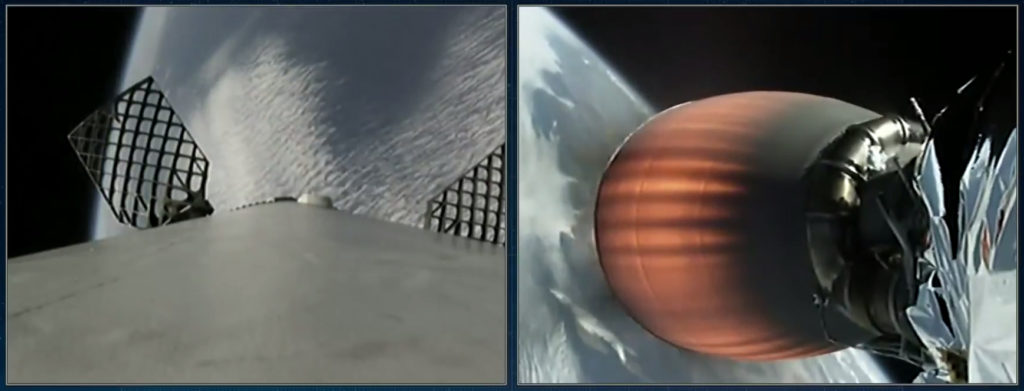
Another resounding success for the books. (SpaceX)

News
Tesla set to roll out two massive new features to Cybertruck
Cybertruck owners are about to see a few important improvements to FSD Supervised.
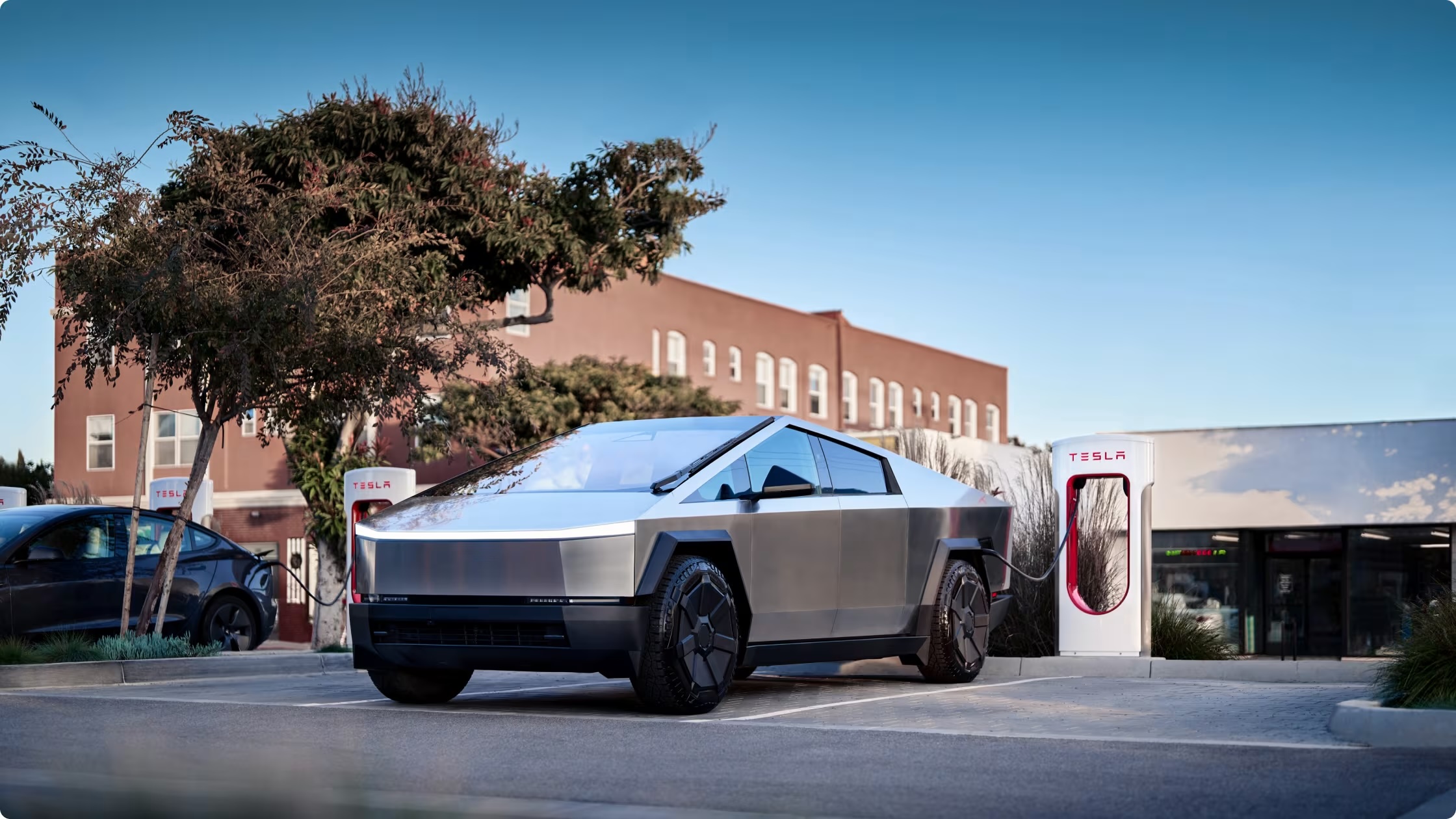
Tesla is set to roll out a couple of highly anticipated Full Self-Driving (FSD) features to the Cybertruck in the coming weeks, effectively putting the truck’s semi-automated driving capabilities on par with the company’s other vehicles.
Within the next 14 days, Tesla is set to roll out the ability to start FSD Supervised from park, according to a Tuesday report from Not a Tesla App citing unnamed sources at the company. The feature was initially launched on other vehicles in November as part FSD v13.2, letting drivers go from “park to park” by simply pressing and holding a start FSD button.
Additionally, while Tesla launched Actually Smart Summon in September 2024, the company is planning to launch the feature in the Cybertruck in the coming update, allowing drivers to summon their vehicles remotely over distances of up to 213 feet using the mobile app.
Along with the start from park FSD feature and Actually Smart Summon, the report also says that Tesla is looking to launch the system’s ability to reverse in the Cybertruck, enabling multi-point turns and other tight maneuvers that require reversing. Crucially, the update will also include an improved traffic controller, which should improve the accuracy of predictions, 3D position tracking, and overall evaluations of the environment, enabling faster decision-making and smoother operation.
READ MORE ON TESLA’S FSD SUPERVISED: Tesla’s Full Self-Driving faces a new hurdle in UK rollout plans
While all of these updates are significant, the improved controller should make FSD in the Cybertruck as good as the software in other vehicles with HW4. In the past, the automaker has also said that it plans to debut a suite of new parking features, which will let drivers select whether the vehicle simply pulls over, or pulls into a parking spot or driveway.
Tesla has prioritized its other vehicles over the Cybertruck with FSD Supervised features since the electric vehicle (EV) launched. Although the Cybertruck was first debuted in November 2023, Tesla only launched FSD Supervised for the vehicle last September after months of anticipation.
In December 2023, Elon Musk explained that the Cybertruck was the “necessarily the lowest priority” for Tesla’s FSD Supervised rollout, due to it being much lower-volume than the company’s other vehicles—and especially around the time it was first released.
Tesla to launch unsupervised Full Self-Driving as a service in Austin in June
News
Rivian launches hands-off driving assist in latest software update
Rivian is finally making its way into the world of automated driving.

Electric vehicle (EV) maker Rivian debuted a new software update this week, and as part of it, the company has started rolling out a hands-off driving assistance system.
Rivian announced the software update in a press release on Tuesday, featuring the newly launched Enhanced Highway Assist for its Gen 2 R1T and R1S, as well as a performance upgrade and a few other improvements. In a separate release, Rivian has also detailed some of the gears behind its approach to autonomy, highlighting that the Enhanced Highway Assist is available for use on as many as 135,000 miles of highway in North America.
Below is a video from CEO RJ Scaringe and VP of Autonomy and AI James Philbin, along with a few more details about the software update and some information from the automaker about the in-house Rivian Autonomy Platform.
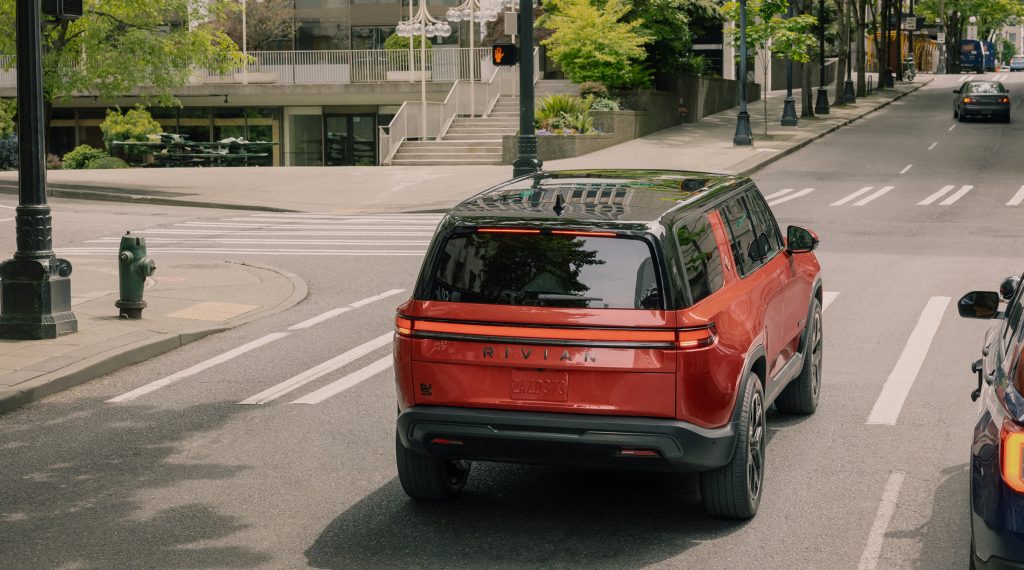
Credit: Rivian
READ MORE ON RIVIAN: Rivian’s $6.6B federal loan for its Georgia Plant is in limbo
Enhanced Highway Assist for Gen 2 vehicles
The company’s latest software update is deploying the new Enhanced Highway Assist to Gen 2 vehicles, which will let drivers take their hands off the wheel for extended periods of time, not unlike Tesla’s Supervised Full Self-Driving (FSD). For the time being, the feature is being offered to owners for free, though it’s not clear if Rivian plans to eventually start charging for the suite.
Enhanced Highway Assist is able to control the vehicles’ steering, acceleration, and braking, and Rivian also uses an infrared cabin camera embedded in the interior rearview mirror to monitor driver attention.
Rivian Autonomy Platform
In the press release dedicated to its autonomy program, Rivian notes that its vehicles include a multimodal suite of 11 cameras and five radars, offering sensor redundancy and a 360-degree view. The company also says that its internally developed cameras have the highest resolution of any vehicle in North America, while its radar systems are intended to help detect objects over longer distances and in low-visibility conditions.
“We are excited to continue releasing new updates and dramatically expanding our autonomy features,” Philbin said. “Everything on our Gen 2 roadmap is capable with the hardware on our vehicles today.”
Rivian says its vehicles also include an on-board compute module that’s capable of more than 200 trillion operations per second, while the company’s machine learning models are trained on the latest ML research and transformer architectures.
Performance Upgrade for Dual-Motor (Gen 1 and Gen 2)
Rivian has also debuted a $5,000 Performance Upgrade for Gen 1 and Gen 2 vehicles with the Standard+, Large and Max battery packs, unlocking 665 horsepower and 829 lb.-ft. of torque. The upgrade also adds three new drive modes, dubbed Sport, Rally, and Soft Sand, to the currently available All-Purpose, All-Terrain, and Snow modes.
Owners can purchase the upgrade from the Rivian mobile app or account page, and it will be downloaded to the vehicle through an over-the-air (OTA) software update.
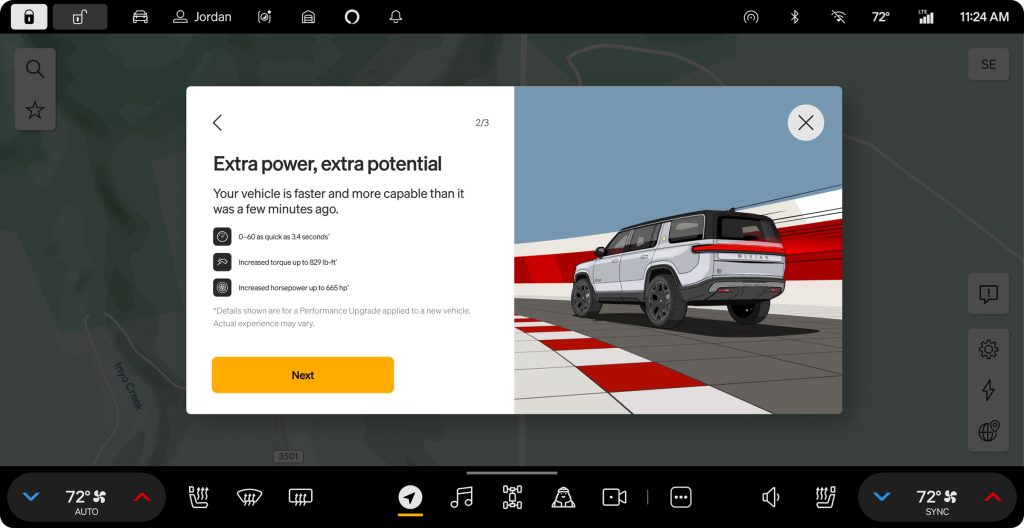
Credit: Rivian
Rally Mode comes to Performance Dual-Motor vehicles
The update also adds Rally Mode to Performance Dual-Motor vehicles, offering heightened throttle response, crisper steering on just about any terrain. To use the feature, drivers will simply need to switch into Off-Road mode, which will let them select Rally Mode.
Wheel Swap
Owners will now be able to change the vehicles’ wheel type in the settings menu, offering improved range estimates.

Credit: Rivian
Go Chime
Rivian has added an audible chime for when a stopped vehicle ahead starts moving, signaling to the driver that they can start driving too. The chime will first be added to the EV maker’s Gen 2 models, before later rolling out to Gen 1.
Side Mirror Auto-Tilt on Reverse
When drivers shift into reverse, Rivian’s sideview mirrors will now automatically tilt downward to show the curb and road, making parallel parking easier. This feature will also go out to both Gen 1 and Gen 2 vehicles.
Control Chargeport Door from Mobile App
Drivers will now be able to control their charging port door remotely using the mobile app, adding an extra layer of protection for those who walk away without closing it manually.
Tire Puncture Detection
Rivian has added proactive detection for tire punctures and slow leaks, set to notify drivers of a potential flat tire before it happens.
Rivian teams up with Ben & Jerry’s on an electric ice cream truck
Elon Musk
President Donald Trump buys a Tesla at the White House – Here’s which model he chose

U.S. President Donald Trump was greeted by a convoy of Tesla electric vehicles today at the White House after he said last evening he would be buying one of the company’s cars in support of Elon Musk.
A variety of Tesla EVs, including the Model S, Cybertruck, and Model Y, all arrived in Washington on Tuesday around lunch time where the President sat in, examined, and mulled over which car he would choose. White House Press Secretary Karoline Leavitt told reporters today that President Trump would be paying “full market price” for the vehicle.
CEO Elon Musk was alongside Trump to help make his decision:
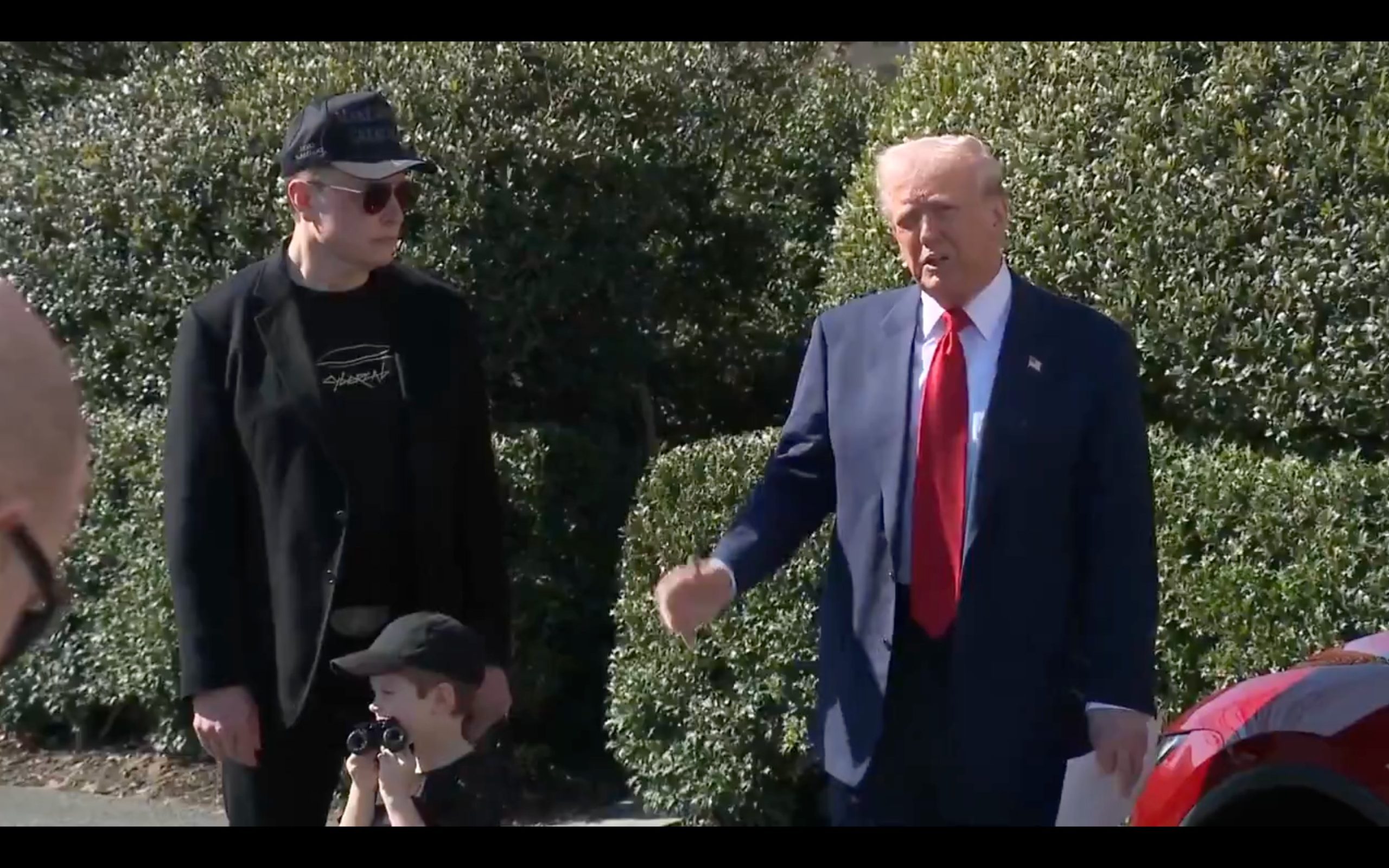
Which Tesla did President Trump Choose?
After mulling the decision for several minutes, President Trump seemed to have gravitated toward the Tesla Model S Plaid in Deep Red, the company’s quickest and most luxurious offering, suitable for the leader of the U.S.
Trump said:
“The one I like is that one (Model S). And I want that same color. I’m going to give [Tesla] a check. I don’t want a discount.”
According to images shared from Washington, it seems Musk brought two Model S vehicles — one in Deep Red and another in Deep Blue Metallic — knowing that the President would probably choose that vehicle, but was unsure about the color.
Tesla makes a decision on the future of its flagship Model S and Model X
President Trump’s Comments on Tesla and Elon Musk
President Trump has truly gained a meaningful working relationship with Musk, who he has called “a genius” and “brilliant” on several occasions. Regarding Tesla, the President said:
“Tesla’s a great company; They’re American cars, it’s American made. He employs thousands of people. He has the most modern plants in the world.”
In regards to the Tesla lineup, President Trump said:
“I know people that have these cars; It blows them away. They love them.”
When talking about the polarizing design of the Cybertruck, he said:
“In terms of imagination, and I think I have a pretty great imagination, who else but this guy would design this and everybody on the road is looking at it. As soon as I saw it, I said, ‘That’s the coolest design.’ You gotta give him (Elon) credit.”
-

 News5 days ago
News5 days agoTesla at risk of 95% crash, claims billionaire hedge fund manager
-
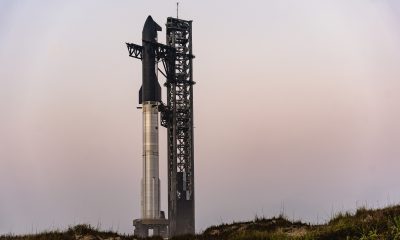
 News7 days ago
News7 days agoSpaceX announces Starship Flight 8’s new target date
-

 News5 days ago
News5 days agoTesla contract with Baltimore paused after city ‘decided to go in a different direction’
-

 News1 week ago
News1 week agoTesla launches fresh U.S. promotions for the Model 3
-

 Elon Musk1 week ago
Elon Musk1 week agoTesla mulls adding a new feature to fight off vandals as anti-Musk protests increase
-

 Elon Musk6 days ago
Elon Musk6 days agoTesla UK sales up over 20% despite Elon Musk backlash
-
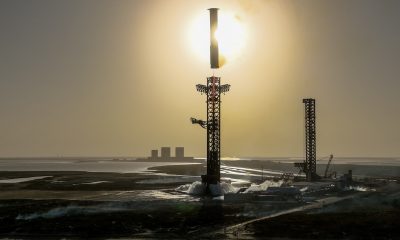
 News5 days ago
News5 days agoStarship Flight 8: SpaceX nails Super Heavy booster catch but loses upper stage
-
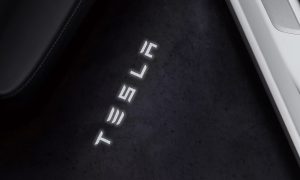
 News7 days ago
News7 days agoOne dozen Teslas burn in arson attack in France, investigation underway
